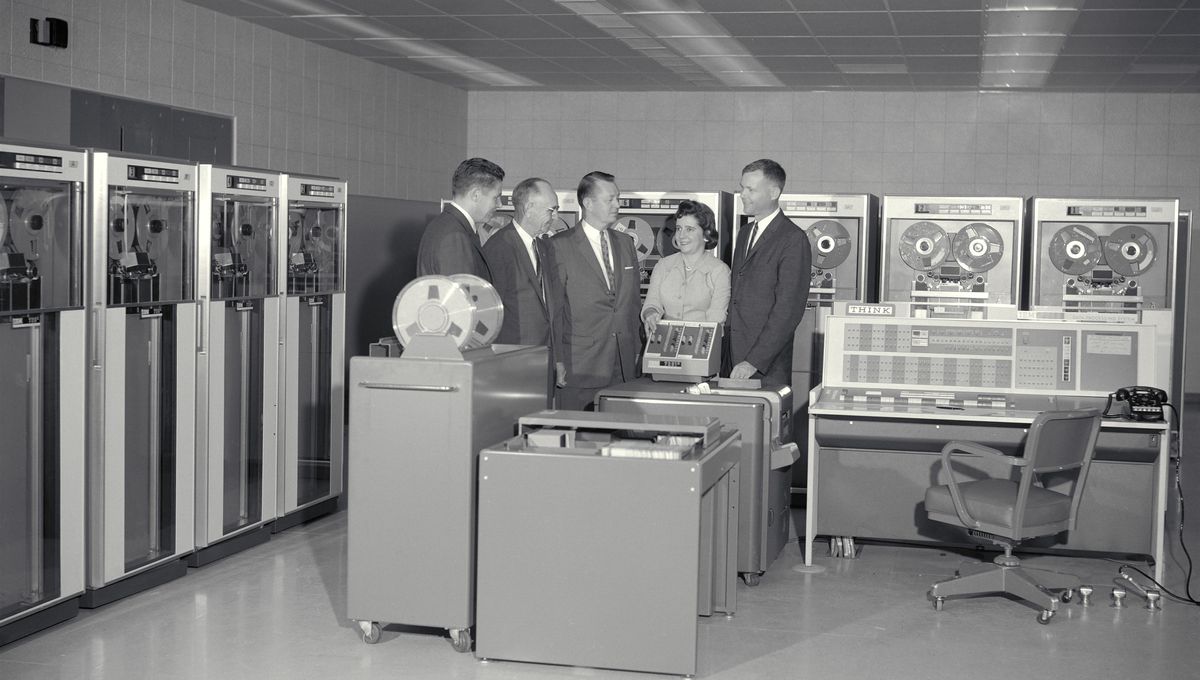
Computers found their voice in the early 1960s with the IBM 7094, the first computer that was used to program and produce a computer-synthesized voice. The pioneering ditty has recently gained a reputation for being oddly ominous, although many forget it did manage to capture the attention of the esteemed sci-fi writer Arthur C. Clarke and influenced one of the great movies of all time.
The infamous recording was made by researchers at Bell Labs, a renowned computer science organization in New Jersey that was in possession of an IBM 7094, said to be the most powerful computer at the time. Carol Lochbaum and John Kelly had been using the piano-sized machine to program a new way to electronically synthesize human voices, now known as the Kelly-Lochbaum Vocal Tract.
To show off the novel ability, they chose the song Daisy Bell (sometimes called A Bicycle Built for Two), an old-timey tune written by Harry Dacre in 1892. Perhaps this was a reference to the name of the facility, Bell Labs, although it’s not certain why they picked this eerie Victorian jingle.
The synthesized vocal melody of Lochbaum and Kelly was set to a synthesized backing track created by Max Mathews, an electrical engineer and amateur violinist. Even this was easier said than done at the time. “Real-time” listening was not yet developed, so Mathews had to record an hour of output, which was then sped up on tape to play back 17 seconds of melody.
The audio clip was added to the Library of Congress’s National Recording Registry in 2009 as it was one of the first documented instances of digital music recording, leading the way towards modern music production and the widespread use of digital formats in music distribution.
“By today’s standards, the 704’s rendition of Daisy Bell sounds quite primitive. The sound is a flat as a dial tone; it is, after all, literally, the voice of a robot,” Cary O’Dell wrote in an essay for the Library of Congress.
“Nevertheless, the original Daisy Bell as relayed via an IBM computer – this meeting of music and machine –remains a bold and singular achievement, a profound leap into a brave new world,” O’Dell adds.
The brilliant brains at Bell Lab would often play their rendition of Daisy Bell to visitors, one of whom was Arthur C. Clarke, the British writer who co-wrote the screenplay for the 1968 masterpiece 2001: A Space Odyssey. It clearly left an impression.
Fans of the film may remember that the song is featured in the movie when HAL, the spacecraft’s sentient AI system, is being dismantled. As David Bowman removes the computer’s physical modules, HAL becomes increasingly incoherent and starts singing the song Daisy Bell, their voice gradually deteriorating into a slurred, disjointed drawl.
In the internet age, the 1961 recording of Daisy Bell has re-found fame thanks to digital creator Nebbed, who uses the audio in a retro-style animation. The clip regularly goes viral on social media, where commenters appear to be both utterly freaked out and (very occasionally) charmed.
Source Link: In 1961, A Computer Sang A Song For The First Time – And It's Nightmare Fuel